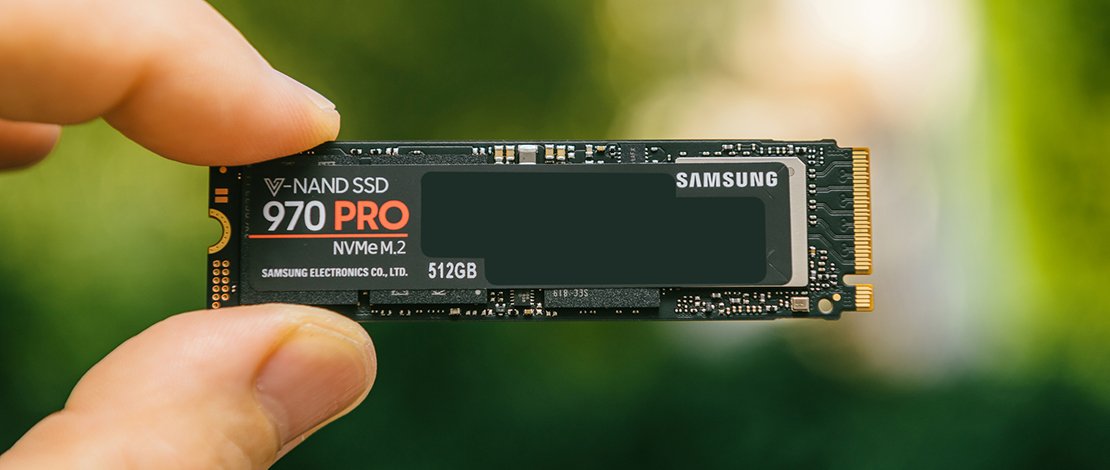What is M.2 And Why Should You Care?

To the ones who are not familiar with tech lingo, especially terms which are often used next to one another but stand for different things. SATA, M.2, NVME, all of these things are abbreviations for storage-related principles and specifications.
Understanding all of these abbreviations would clear up many issues, but it is often best to start with a single one. Questions such as what is M.2 SSD or what is M.2 storage will be answered, as well as details surrounding storage principles, in general.
What is M.2 Storage – Is it Better than SATA?
M.2 is an abbreviation that used to stand for Next Generation Form Factor or NGFF. Its name was changed to M.2. It was based on mSATA and was meant to replace it, which it has successfully done. mSATA was specifically developed to make better use of space to size, which is important for small-footprint devices such as laptops.
It is important to note that M.2 is a specification for expansion cards and storage devices, but not an interface of its own. The M.2 connector has multiple interfaces, which is why it is the preferred format for many storage devices and other expansion cards.
Today, the most commonly used interface with M.2 is PCI express or PCIe, up to Gen 4.0.
What is A M.2 Slot? – How Different is it to SATA?
M.2 slots have 75 pins, out of which 66 or 67 are used for transmitting data, and the remaining are removed for keying notches. This brings up the issue of type B, type M and type B + M keying. Type B SSDs, for example, have up to x2 lanes of PCIe bandwidth through pins 12-19. Type M can have up to x4 lanes, through pins 59-66. Type B + M SSDs provide the most compatibility while running x2 at the most.
Different key types correspond to a different slot. B + M SSDs can slot into any of the two different slots, while an M type could only be socketed into an M slot.
M.2 SSD Size – It Matters, Physically
M.2 SSDs, like other M.2 expansion cards, can be of different width and length. Standardized widths are 12, 16, 22 and 30mm. They can also be 30, 42, 60, 80 and 110mm long. Widely available SSDs are often 22mm wide and can be of varying length.
This is abbreviated using the numbers of width and length, one next to another, for example, a 2280 SSD. The SSD in question would be 22mm wide and 80mm long. This matters because each M.2 expansion card has a screw hole on the opposite end, which holds it in place. Motherboards have support for various lengths, which should be checked prior to purchasing any expansion card or SSD.
M.2 Speed – An Important Factor for Storage
The speed of a drive or expansion card used with the M.2 standard depends on which bus it uses to communicate. SATA drives can be used with an M.2 slot, but the speed would be limited to that of SATA, up to 750 MB/s.
On the other hand, NVMe M.2 drives or cards which use PCIe 4.0, for example, would have a bandwidth of 1.97 GB/s at worst, using the x1 configuration, up to 8 GB/s using the x4 configuration, which is the current lane limit of M.2. Depending on the number of devices using PCIe lanes, the speed may vary, but even an NVMe SSD using x1 is faster than a top-speed SATA SSD.
What is Ultra M.2? – Is it Special?
At the time, in 2014, Ultra M.2 seemed like something interesting, albeit it was just an advertisement from ASRock, for their PCIe Gen 3.0 M.2 slots. Compared to the massively used PCIe 2.0 M.2 motherboards and drives at the time, this provided a huge uplift in bandwidth. Ultra M.2 also made use of a direct connection to the CPU, reducing latency. Again, at the time, most motherboard manufacturers used a CPU to chipset to M.2 connection.
Other manufacturers were quick to catch up, leaving Ultra M.2 as another term to confuse potential buyers.
M.2 Cards – Expansion Cards and Network Adapters
M.2 can be used for multiple purposes, other than storage. It has interfaces for USB, PCIe, SATA, and even DisplayPort. In laptops, for example, M.2 network adapters, otherwise known as WiFi cards, have become normal. Making use of PCIe lanes for better network bandwidth is to be expected.
In desktop PCs, M.2 expansion cards can be used, albeit they slot in a PCIe x16 or x8 slot. They can take up to 4 or more M.2 NVMe SSDs, which is perfect for RAID configurations.
NVMe or SATA SSDs in an M.2 Slot?
NVMe SSDs use PCIe to communicate and transfer data, meaning that they are faster. Even the slowest NVMe SSD is faster than a SATA SSD. SATA SSDs, on the other hand, have better compatibility with older devices, but there are very few devices with M.2 slots that do not support NVMe, where SATA would be better suited.
Traditionally, SATA drives come in 2.5 and 3.5-inch sizes, which is the standard for most desktops and laptops. There are M.2 sized SATA drives, but they are rare and their use case is even rarer. NVMe SSDs are simply put, the best SSDs, even though there is a use case for SATA drives.
Summary and Conclusion – M.2 Form Factor
M.2 is a specification for storage and expansion cards, based on the mSATA standard. It offers more interfaces, for a more advanced connection, better suited to smaller devices, not to mention solid-state drives.
The M.2 connector supports anything from USB, to SATA and PCIe, making it a standard in modern computers. M.2 drives are available in multiple sizes, which should be checked for compatibility. Armed with the necessary knowledge about M.2, making an educated purchase should be less confusing.